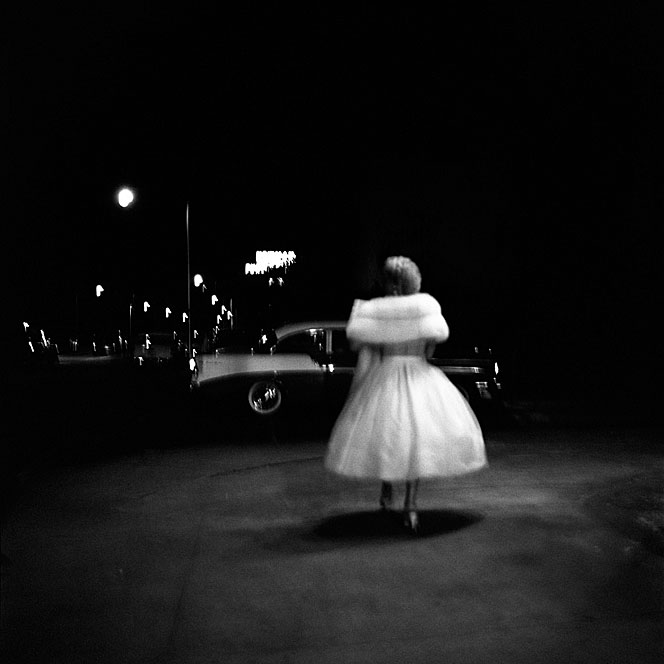 Sometimes a story comes along that captures the imagination of everyone that hears it: the story of Vivian Maier is one of those tales. Maier was a nanny in upscale neighborhoods in Chicago in the 1950s (she once worked for Phil Donahue, the story goes), who, in her spare time — and apparently even while she was on the job, toting her young wards around town – used her trusty Roliflex to take pictures of the people she met along the way. That makes for an interesting enough story, but the kicker is that her photography is excellent. As in world-class. You could easily put her work alongside that of the great street photographers, Diane Arbus, Henri Cartier-Bresson, Elliot Erwitt and Gary Wingrand (in my humble opinion). Her images are composed elegantly, her portraits contain humor and humanity without being mean, she puts the viewer into a time and place instantly. It’s a sumptuous journey into the past, but one that we feel we can touch and feel from the distance of the present.
Sometimes a story comes along that captures the imagination of everyone that hears it: the story of Vivian Maier is one of those tales. Maier was a nanny in upscale neighborhoods in Chicago in the 1950s (she once worked for Phil Donahue, the story goes), who, in her spare time — and apparently even while she was on the job, toting her young wards around town – used her trusty Roliflex to take pictures of the people she met along the way. That makes for an interesting enough story, but the kicker is that her photography is excellent. As in world-class. You could easily put her work alongside that of the great street photographers, Diane Arbus, Henri Cartier-Bresson, Elliot Erwitt and Gary Wingrand (in my humble opinion). Her images are composed elegantly, her portraits contain humor and humanity without being mean, she puts the viewer into a time and place instantly. It’s a sumptuous journey into the past, but one that we feel we can touch and feel from the distance of the present.
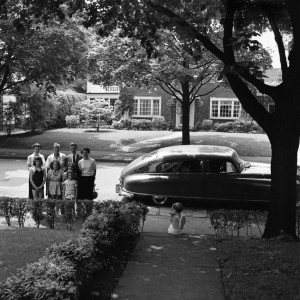 Here’s where the story gets interesting: her artistry went under the radar, and only her acquaintances knew she was a shutterbug (hard to imagine in the age of Tumblr and Flickr). She was often able to afford a darkroom, but in later years, she struggled to make ends meet, and even lived on the street. In 2005, a young historian named John Maloof was researching a book about Chicago’s Northwest side and discovered an initial cache of Maier’s negatives. Though he knew little about photography, he soon realized what a treasure trove he’d uncovered and started on a journey to find out more about the unknown artist. He had to do some sleuthing to even learn Maier’s name, and set about trying to recover all of her lost negatives; sadly by the time he tracked Maier down, he learned that she had passed away.
Here’s where the story gets interesting: her artistry went under the radar, and only her acquaintances knew she was a shutterbug (hard to imagine in the age of Tumblr and Flickr). She was often able to afford a darkroom, but in later years, she struggled to make ends meet, and even lived on the street. In 2005, a young historian named John Maloof was researching a book about Chicago’s Northwest side and discovered an initial cache of Maier’s negatives. Though he knew little about photography, he soon realized what a treasure trove he’d uncovered and started on a journey to find out more about the unknown artist. He had to do some sleuthing to even learn Maier’s name, and set about trying to recover all of her lost negatives; sadly by the time he tracked Maier down, he learned that she had passed away.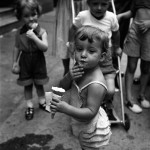
Since that time, Maloof’s life has been taken over with the immense project of preserving the work of this unknown talent. Click here for more detail about Maloof’s project and the incredible story of Vivian’s life and work. And here is where you can page through many of the images that John as started to process and print. He is selling the work in limited editions (a practice common in photography collection) and a few galleries have offered to show the incredible work. Maloof has only been able to develop, scan and make prints of approximately 15% of Vivian’s negatives – thinking of the images yet to be discovered is part of the joy of this story.
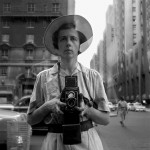 Do yourself a favor and spend a few moments paging through some of Maier’s photographs that have been uncovered and are online. She shot lovely landscapes when she bothered, but what interested her are the people she met on the street – children, old people, the rich and the disadvantaged. Somewhere between the formality of her composition, and the distance inherent in being a stranger, she captures moments that we know intimately to be true.
Do yourself a favor and spend a few moments paging through some of Maier’s photographs that have been uncovered and are online. She shot lovely landscapes when she bothered, but what interested her are the people she met on the street – children, old people, the rich and the disadvantaged. Somewhere between the formality of her composition, and the distance inherent in being a stranger, she captures moments that we know intimately to be true.
Or, better yet: Dash over to the Merry Karnowsky Gallery on La Brea (before end of day Saturday (Jan 28) when the show comes down — gallery will be open until 9:00 PM!) and see for yourself.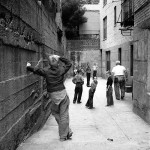
For further research, be sure to page through Maloof’s website (you can get on his newsletter for updates on the project) or read this December 2011 Smithsonian Magazine article about her life and work.
You can also buy a book about Maier’s work through our Amazon store (a few pennies will come to support us!). It’s a nice gift for a photography buff.

